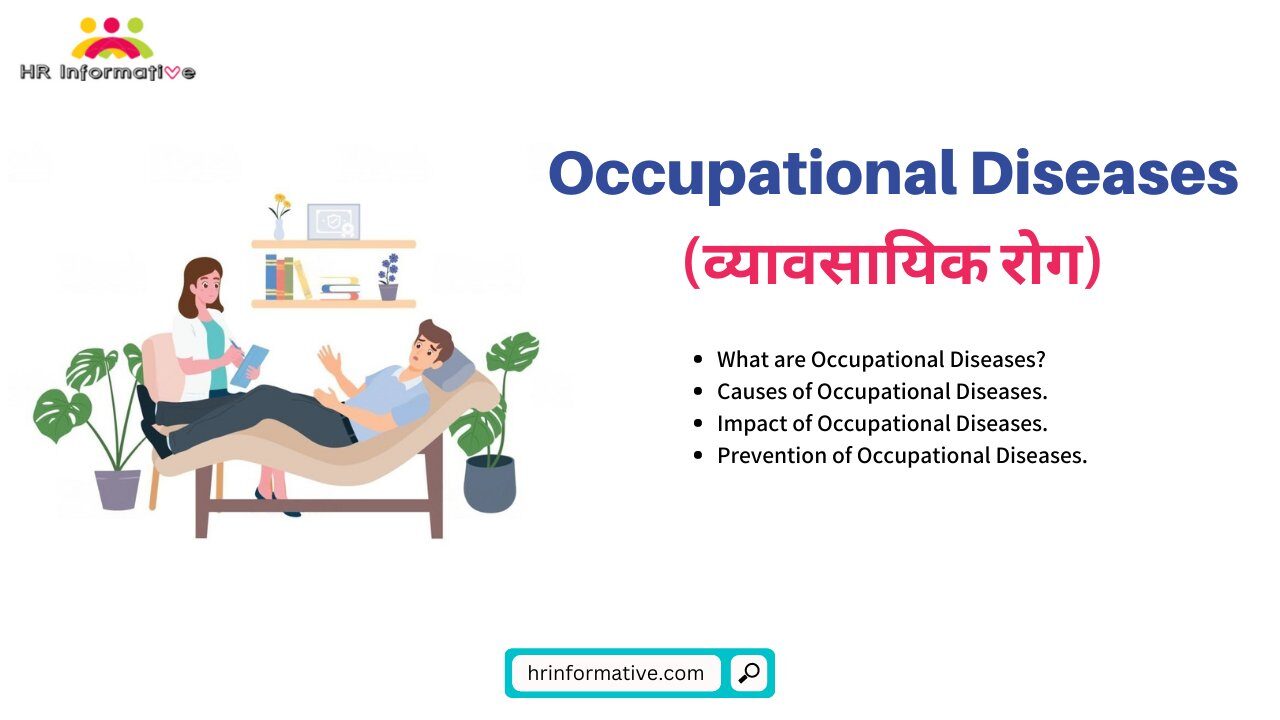Occupational diseases are diseases that are caused or exacerbated by factors present in the workplace environment. These diseases can range from physical injuries to mental health disorders, and they can have a significant impact on the affected individual’s quality of life. In this article, we will explore the definition of occupational diseases, their causes, and the impact they have on society.
What are Occupational Diseases?
Occupational diseases or industrial diseases are illnesses that are directly or indirectly caused by work-related factors. These factors can include exposure to hazardous substances, repetitive motions, loud noises, or extreme temperatures. These diseases can be acute or chronic, and they can be caused by a single exposure or by prolonged exposure over time. Common examples of occupational diseases include asbestosis (a lung disease), mesothelioma (cancer), silicosis (a lung disease), carpal tunnel syndrome (a hand disease), hearing loss, and stress-related disorders.
Causes of Occupational Diseases
There are many different factors that can contribute to the development of occupational diseases. These include:
Chemical Exposure
Workers who are exposed to hazardous chemicals such as asbestos, lead, or mercury can develop serious illnesses like mesothelioma, lead poisoning, or mercury poisoning.
Physical Strain
Workers who perform physically demanding tasks such as heavy lifting or repetitive motions can develop musculoskeletal disorders like carpal tunnel syndrome or tendinitis.
Noise Exposure
Workers who are exposed to loud noises for extended periods of time can develop hearing loss or tinnitus.
Psychological Stress
Workers who experience high levels of stress on the job can develop mental health disorders like depression, anxiety, or post-traumatic stress disorder (PTSD).
Infectious Agents
Workers who are exposed to infectious agents like viruses, bacteria, or fungi can develop illnesses like tuberculosis or HIV/AIDS.
Impact of Occupational Diseases
Occupational diseases have a significant impact on both the individual worker and society as a whole. Some of the ways in which occupational diseases can impact individuals include:
Reduced Quality of Life
Workers who develop occupational diseases may experience chronic pain, disability, or reduced mobility. This can significantly impact their quality of life and limit their ability to perform everyday tasks.
Financial Hardship
Workers who develop occupational diseases may face significant financial hardship due to medical bills, lost wages, or disability.
Emotional Distress
Workers who develop occupational diseases may experience emotional distress due to the impact of their illness on their personal and professional lives.
Reduced Life Expectancy
Workers who develop occupational diseases may have reduced life expectancy due to the severity of their illness.
In addition to the impact on the individual worker, occupational diseases also have a significant impact on society as a whole. Some of the ways in which occupational diseases can impact society include:
Economic Costs
Occupational diseases can have significant economic costs in terms of medical treatment, lost productivity, and disability benefits.
Legal Costs
Employers who fail to provide a safe working environment may be held liable for the costs associated with occupational diseases.
Social Costs
Occupational diseases can have social costs in terms of their impact on families, communities, and the wider society.
Prevention of Occupational Diseases
Preventing occupational diseases is an important priority for employers, governments, and workers alike. Some of the ways in which occupational diseases can be prevented include:
Workplace Safety
Employers can take steps to ensure that the workplace is safe by providing protective equipment, training workers on safety procedures, and conducting regular safety inspections.
Hazardous Substance Control
Employers can also take steps to control exposure to hazardous substances by implementing ventilation systems, providing protective clothing, and using safer chemicals.
Ergonomics
Employers can implement ergonomic strategies to reduce the risk of musculoskeletal disorders by modifying workstations, providing ergonomic equipment, and promoting stretching exercises.
(Ergonomics is the scientific study of the interactions between humans and their physical and work environments. Its goal is to design work environments, tools, and tasks to fit the abilities and needs of workers while minimizing the risk of injury, illness, and discomfort.)
Stress Management
Employers can also take steps to reduce stress in the workplace by promoting a healthy work-life balance, providing mental health resources, and addressing workplace conflicts.
Health Screenings
Regular health screenings can help identify early signs of occupational diseases, allowing for prompt treatment and prevention of further damage.
Education and Training
Employers can provide education and training on workplace safety, hazards, and prevention of occupational diseases to ensure that workers are informed and empowered to protect themselves.
Conclusion
Occupational diseases are a serious issue that affects workers and society as a whole. These diseases can have a significant impact on the individual worker’s quality of life, financial stability, and emotional well-being, and they can also have economic, legal, and social costs for society. Prevention of occupational diseases is crucial and requires a collaborative effort from employers, governments, and workers. By implementing workplace safety measures, controlling hazardous substances, promoting ergonomics and stress management, and providing education and training, we can work towards creating safer and healthier workplaces for all.
Also Read :




